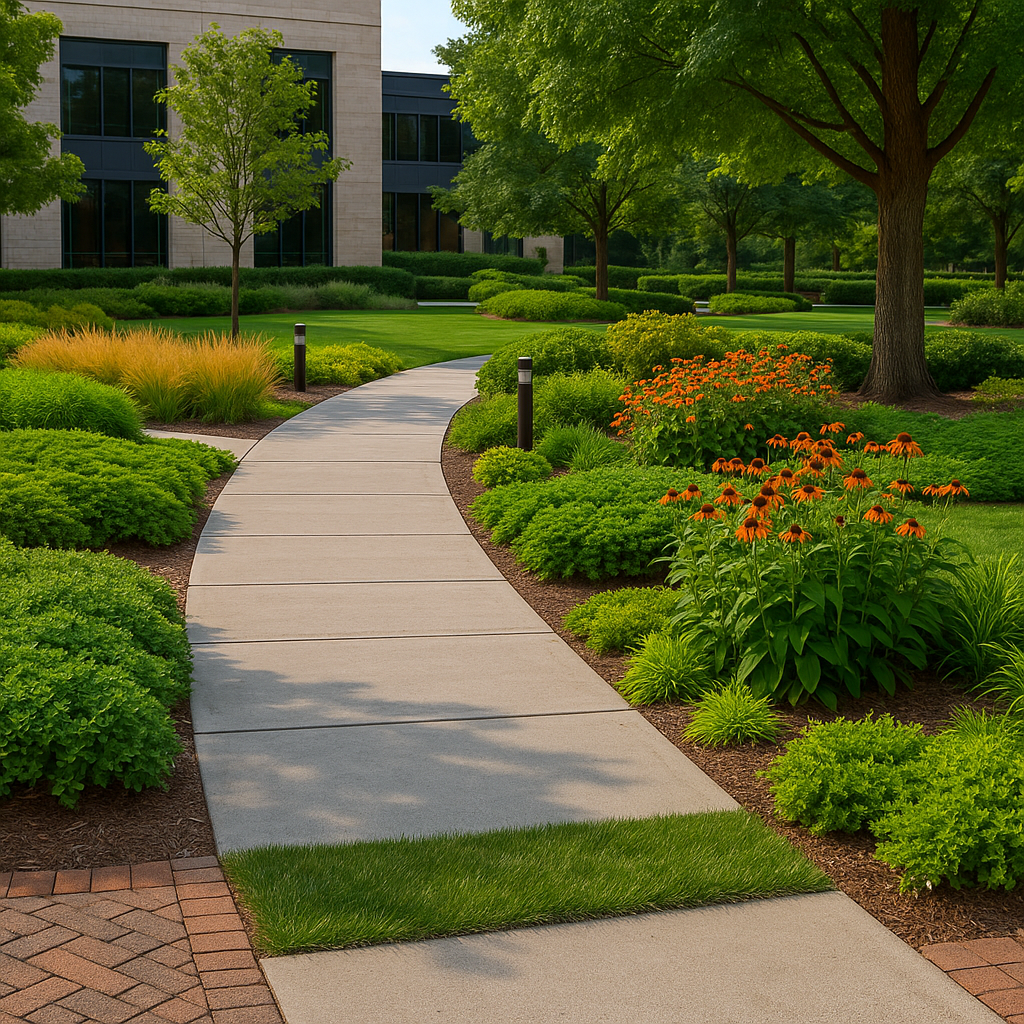A truly beautiful landscape achieves more than visual appeal—it strikes a delicate balance between lush greenery and purposeful usability. From public parks to corporate campuses and residential developments, landscape design today must support both aesthetic richness and practical functionality.
This article explores how a modern landscape design architecture approach meets the evolving needs of communities and environments.
Why Balancing Greenery and Usability Matters
Multifunctional Outdoor Spaces
People today demand more from outdoor areas: spaces that are not just scenic but functional for recreation, meetings, walking, or quiet relaxation. Designing with both greenery and usability ensures spaces serve real needs while maintaining ecological value.
Long-Term Economic and Environmental Benefits
Usable green spaces reduce urban heat, encourage walkability, and increase property value. They also contribute to mental well-being, air quality, and biodiversity.
Learn more about economic value in Why a Beautiful Landscape Boosts Property Value.
Enhancing Community and Identity
A landscape that fosters interaction, supports events, and offers accessibility strengthens community engagement and contributes to local identity.
Core Elements of Balanced Landscape Design
Landscape Drawing: Planning for Dual Purpose
A detailed landscape drawing defines usable zones such as seating, event lawns, walking paths, and green buffers, ensuring no space is wasted while preserving ecological intent.
Zoned Planting Strategies
Planting in defined layers or zones allows for:
- High-use areas with turf or groundcover for foot traffic
- Transitional shrub zones
- Visual buffers and shaded tree canopies
This layered approach allows functionality without sacrificing greenery.
Sustainable Materials
Use eco-conscious hardscaping that integrates well with plant life:
- Permeable pavers
- Recycled decking
- Low-heat surfaces like natural stone
These choices reduce environmental impact and support landscape longevity.
Usability-Focused Green Features
Walkable Networks
Paths should connect entries, buildings, open lawns, and shaded retreats. Integrating wide, accessible paths with wayfinding promotes movement and orientation.
Explore functional layout ideas in Beautiful Landscape That Integrates Pathways and Views.
Multi-Purpose Lawns and Courtyards
Designing green areas that flex for yoga, markets, performances, or group lunches maximizes utility and community value.
Outdoor Furniture and Shade Structures
Benches, tables, pergolas, and trellises should align with pedestrian flow and offer comfort while enhancing visual interest.
Stormwater and Irrigation Integration
Bioswales, rain gardens, and smart irrigation maintain plant health while supporting climate-resilient function.
Greenery That Supports Function
Low-Maintenance Native Plants
Using native and climate-appropriate species reduces watering, supports local ecosystems, and ensures longevity with minimal care.
Canopy Trees for Shade and Cooling
Shade trees reduce urban heat islands and make outdoor areas more usable year-round.
Vertical Greening and Edges
Living walls, hedges, and planter borders enhance enclosure, reduce noise, and define activity zones without hard barriers.
Where Function Meets Design: Case Applications
Office Parks and Campuses
Corporate landscapes must offer visual tranquility while supporting circulation, seating, and flexible collaboration spaces.
Learn more from Beautiful Landscape Where Function Meets Modern Design.
Urban Courtyards and Mixed-Use Projects
In high-density areas, compact landscapes integrate pocket greenery, plazas, and gathering spots within a tight footprint.
Civic and Transit Hubs
Plazas near transit must remain navigable and open, but still offer cooling shade, aesthetic form, and rest stops.
Residential Communities
Subdivisions with trails, shaded playgrounds, and green buffers increase walkability, safety, and property appeal.
Working with a Landscape Contractor for Success
Holistic Vision to Execution
Experienced landscape contractors translate design intent into buildable realities. They balance spatial needs, plant performance, and usability goals.
Construction and Phasing Strategy
They advise on phased planting and installation to minimize disruption while ensuring healthy establishment and usability during development.
Maintenance Planning
Contractors help outline seasonal care routines, irrigation schedules, and planting adjustments to preserve the long-term balance.
Best Practices for Sustainable and Functional Landscapes
- Include plant-rich edges and transitions for ecological benefit
- Maintain sightlines for safety and openness
- Design for accessibility with firm, slip-resistant surfaces
- Ensure lighting supports evening use and safety
- Include signage and cues to guide circulation naturally
Final Thoughts
Creating a beautiful landscape is about more than planting greenery—it requires thoughtful integration of usability, sustainability, and design intent. By working closely with landscape designers, skilled landscape contractors, and clear planning documents like landscape drawings, properties can become more livable, vibrant, and resilient.
Blending beauty and purpose makes landscapes memorable, inclusive, and high performing—a crucial approach for future-focused development across residential, civic, and commercial spaces.

